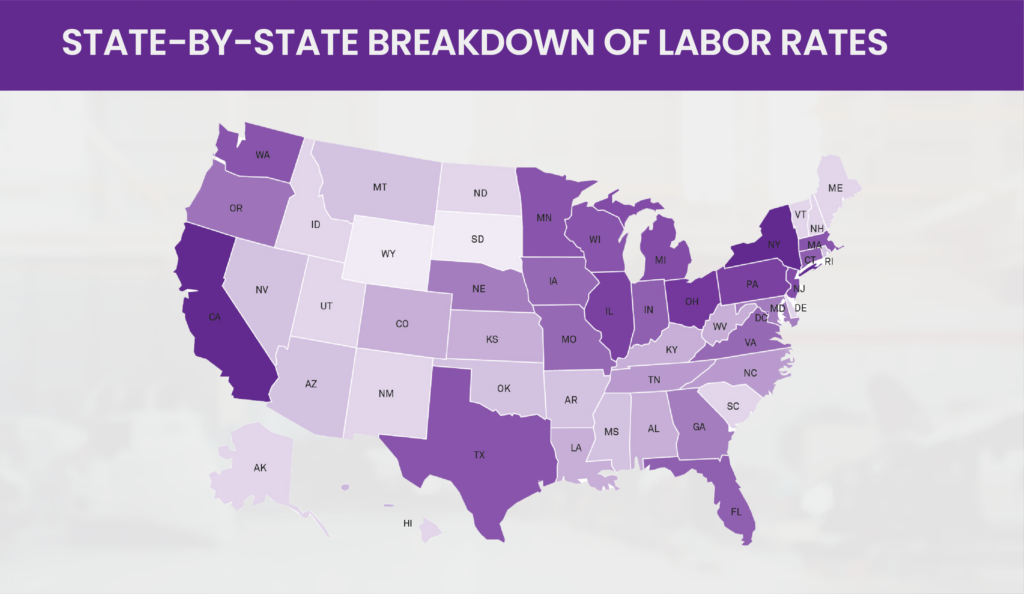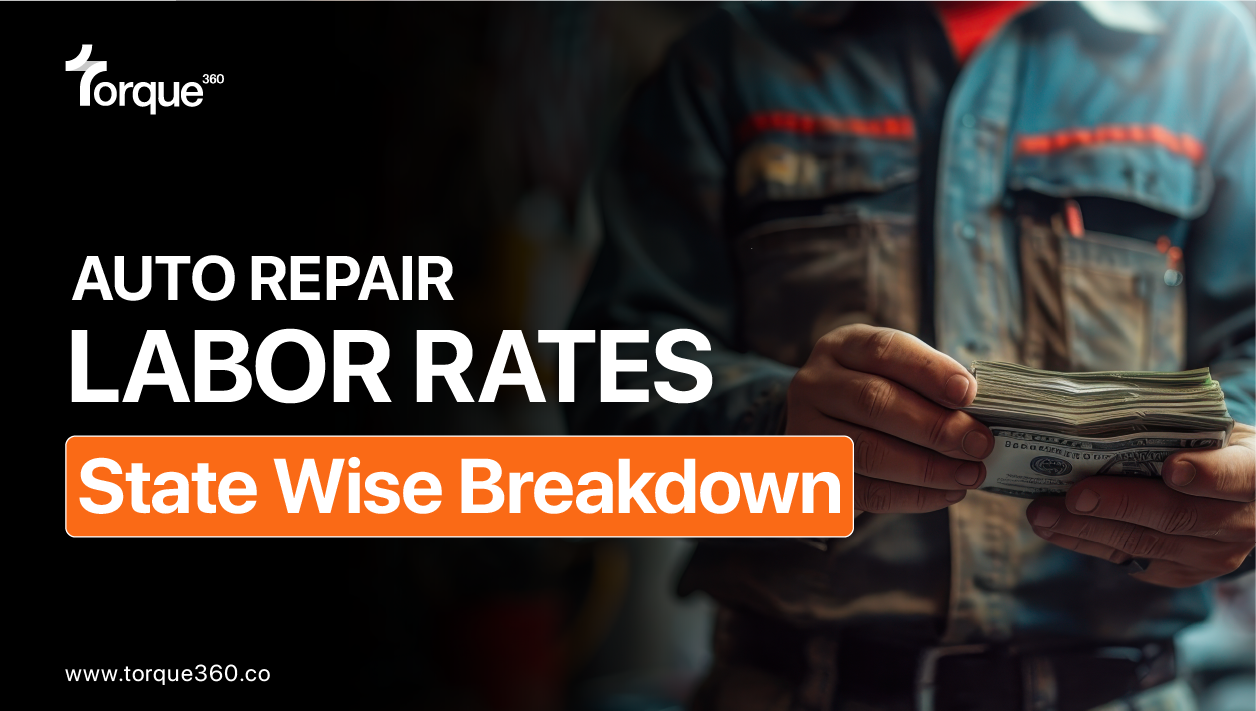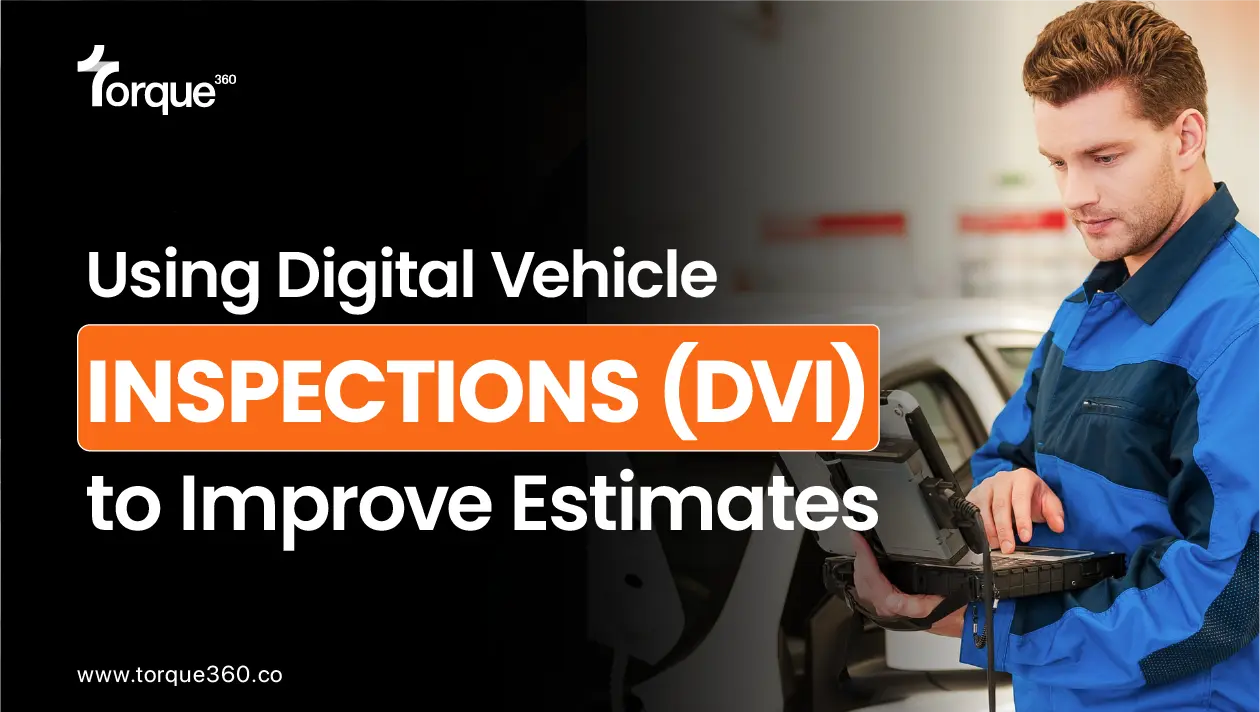It’s Monday morning, and your shop is buzzing with activity.
Jobs are lined up.
Calls are coming in.
Customers want quotes.
But one question lingers: Are your labor rates where they should be?
Knowing your state’s average auto repair labor rates helps you stay competitive while covering your costs.
Let’s break down why understanding these rates can boost your profits and attract more customers.
Navigating Auto Repair Shop Labor Rates Across the U.S.
Imagine traveling from the sunny streets of Los Angeles to the snowy roads of Minnesota.
As you move from state to state, you notice something surprising: auto repair shop labor rates are all over the map.
In California, for example, you might find shops charging around $150 per hour, whereas automotive repair shop rates in Oklahoma City go around $147, and in Texas, that rate could dip to about $90.
Now, consider how this affects your business. If you’re in a high-cost area, your rates must reflect that—but what if they’re too high? Customers might drive a few extra miles to save a few bucks.
Conversely, in regions with lower rates, you may need help to keep your doors open if you undercharge.
Knowing these averages lets you position your shop competitively, ensuring you survive and thrive.
The difference in auto mechanic labor rate can feel like a game of musical chairs, and you don’t want to be the one left standing without customers.
Discover the ultimate resource for auto repair labor rates by zip code in the USA—unlock the new industry standard for body and collision shops!
Factors that Influence Auto Repair Labor Rates
Here are five key factors that influence labor rates in different states:
Geographic Location
Urban areas typically have higher auto repair shop labor rates due to increased demand and cost of living, while rural areas tend to charge less.
Cost of Living
States with a higher overall cost of living, like California and New York, often have higher labor rates to match the economic environment.
Competition
Competitive pricing can drive rates down in regions with many repair shops. Conversely, areas with few shops may see higher rates due to limited options.
Specialization and Expertise
Shops specializing in certain types of repairs or high-end vehicles may charge more due to their specialized skills and advanced certifications.
State Regulations
Different states have varying regulations regarding licensing, safety standards, and consumer protection laws, which can affect operational costs and, consequently, labor rates.

State-by-State Breakdown of Repair Labor Rates
Here is a comprehensive overview of auto mechanic labor rate by state according to World Population Review:
Northeast
| State | Labor Rate |
| Vermont | $127.15 |
| New Hampshire | $131.38 |
| Rhode Island | $131.61 |
| Massachusetts | $132.83 |
| New York | $135.19 |
| Maine | $135.35 |
| Connecticut | $136.84 |
| New Jersey | $138.50 |
| Pennsylvania | $139.66 |
Midwest
| State | Labor Rate |
| Ohio | $136.07 |
| Wisconsin | $138.95 |
| Illinois | $140.89 |
| Indiana | $143.46 |
| Michigan | $145.03 |
| North Dakota | $145.66 |
| Iowa | $145.96 |
| Minnesota | $146.02 |
| Missouri | $146.49 |
| Kansas | $146.87 |
| South Dakota | $147.27 |
| Nebraska | $147.41 |
South
| State | Labor Rate |
| Maryland | $141.30 |
| Delaware | $142.15 |
| Florida | $142.74 |
| Virginia | $143.25 |
| West Virginia | $143.25 |
| North Carolina | $144.65 |
| Georgia | $145.34 |
| Texas | $145.86 |
| Kentucky | $146.21 |
| South Carolina | $146.75 |
| Tennessee | $146.80 |
| Oklahoma | $147.81 |
| Arkansas | $148.10 |
| Louisiana | $149.34 |
| Alabama | $149.58 |
| Mississippi | $151.67 |
West
| State | Labor Rate |
| Hawaii | $136.74 |
| Nevada | $138.58 |
| Arizona | $138.78 |
| Oregon | $139.62 |
| Washington | $142.59 |
| Utah | $142.93 |
| Idaho | $143.84 |
| California | $144.56 |
| New Mexico | $145.82 |
| Montana | $147.28 |
| Alaska | $148.66 |
| Colorado | $148.66 |
| Wyoming | $151.18 |
To keep yourself updated with the latest labor rates, click here!
How to Add Labor Rate in Auto Repair Estimate Software
Once you log into Torque360, go to Settings > Labor Class and click “Create New.”
Enter “Labor Class Name” and “Labor Rate per Hour.” Click on “Default” (optional), and then click on “Save.”
You can create multiple labor classes. Once you are done, you will see “Status.”
You can select which class(s) to keep active or inactive. There can only be one default labor class.
So, the next time you create an estimate, the labor rate will automatically be entered into the auto repair estimate software.
Adding Labor Time via Epicor Integration
You can add the estimated automotive labor time guide from Epicor Integration when creating the estimate.
Read “Using Auto Repair Estimate Software: A Shop Owner’s Guide” to learn how to add a job/labor from Epicor.
Once a job and labor are imported from Epicor to estimate, you can see the estimated time to finish a job.
This makes your estimate more accurate and precise!
Impact of Labor Rates on Business Operations
The impact of auto repair shop labor rates on business operations can be significant, especially in industries like automotive repair. Here are some key aspects to consider:
Cost Structure
Higher labor rates directly increase operating costs, affecting the overall budget and pricing strategies.
Competitive Positioning
Labor rates influence how a business is perceived in the market. Balancing competitive pricing with service quality is crucial for attracting and retaining customers.
Profit Margins
Fluctuating labor rates can significantly affect profit margins, making effective cost management essential for sustainability.
Service Quality and Expertise
Higher labor rates often correlate with more skilled technicians, leading to better service quality and increased customer satisfaction.
Customer Perception
Customers evaluate labor rates against perceived value. Businesses must justify higher rates through exceptional service or specialized expertise to maintain customer trust and loyalty.
Here’s everything you need to know about automotive repair labor guide!
Conclusion
Understanding average auto repair labor rates by state is more than trivia for auto repair shop owners—it’s a strategic advantage.
Keeping your rates competitive and aware of local trends can attract more customers and boost your bottom line.
So, the next time you hear that phone ring, you’ll be ready with a quote that will keep your customers happy and your shop thriving.
Now, what’s your labor rate strategy? Are you ready to take your shop to the next level?
Frequently Asked Questions
What factors determine auto repair labor rates in my state?
Auto repair labor rates can vary based on geographic location, cost of living, competition among repair shops, the specialization and expertise of technicians, and state regulations.
Should I adjust my labor rates based on local competition?
Yes, it’s essential to monitor your competitors’ pricing. If your rates are significantly higher or lower, it may impact your customer base.
How do labor rates impact my profit margins?
Labor rates directly influence your profit margins. Higher rates can increase profits, but if they are too high and deter customers, it can lead to lower sales.
How much do most mechanics charge for labor?
Most mechanics charge between $75 and $130 per hour. This depends on the state, the complexity of the repair, and the mechanic’s experience.





